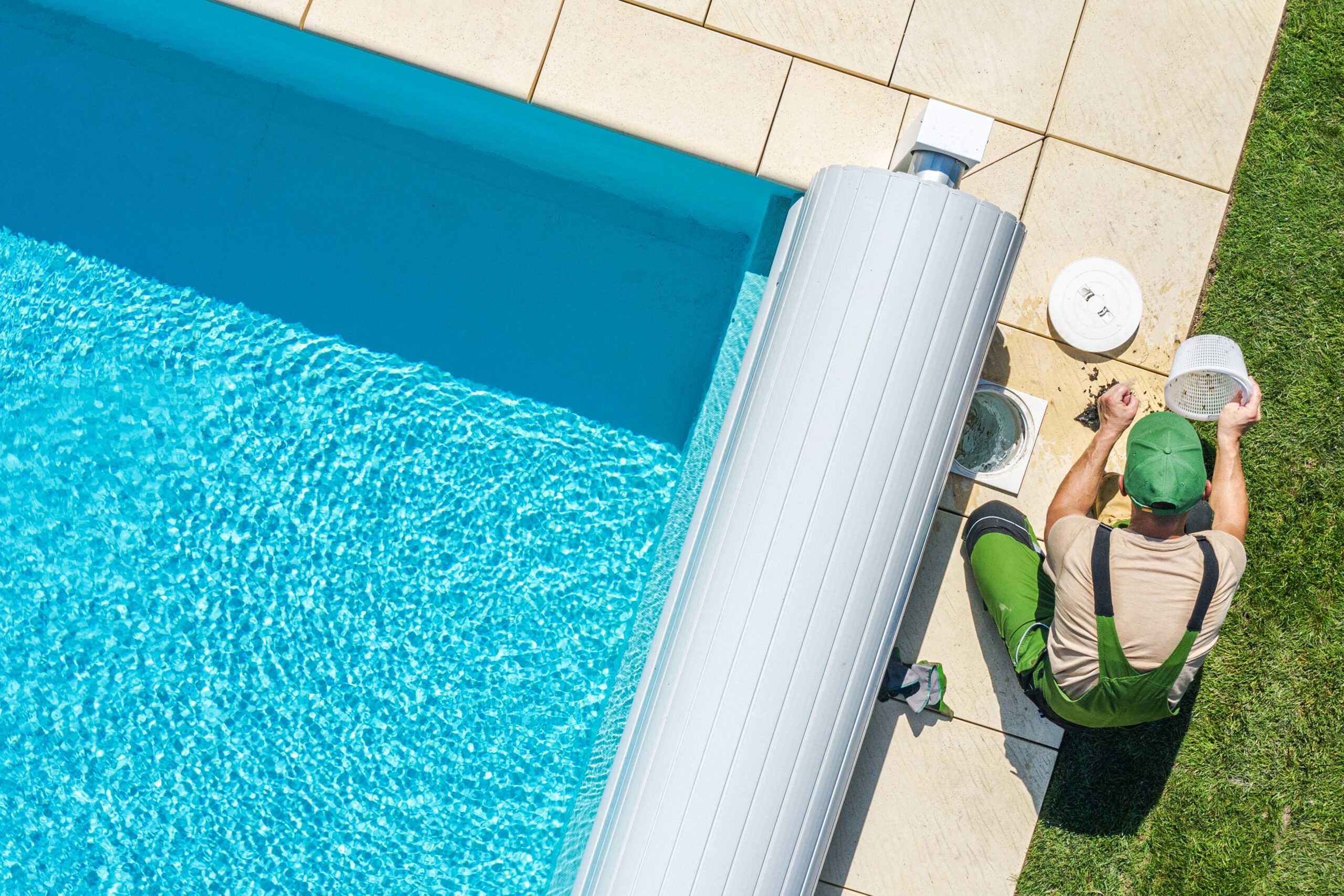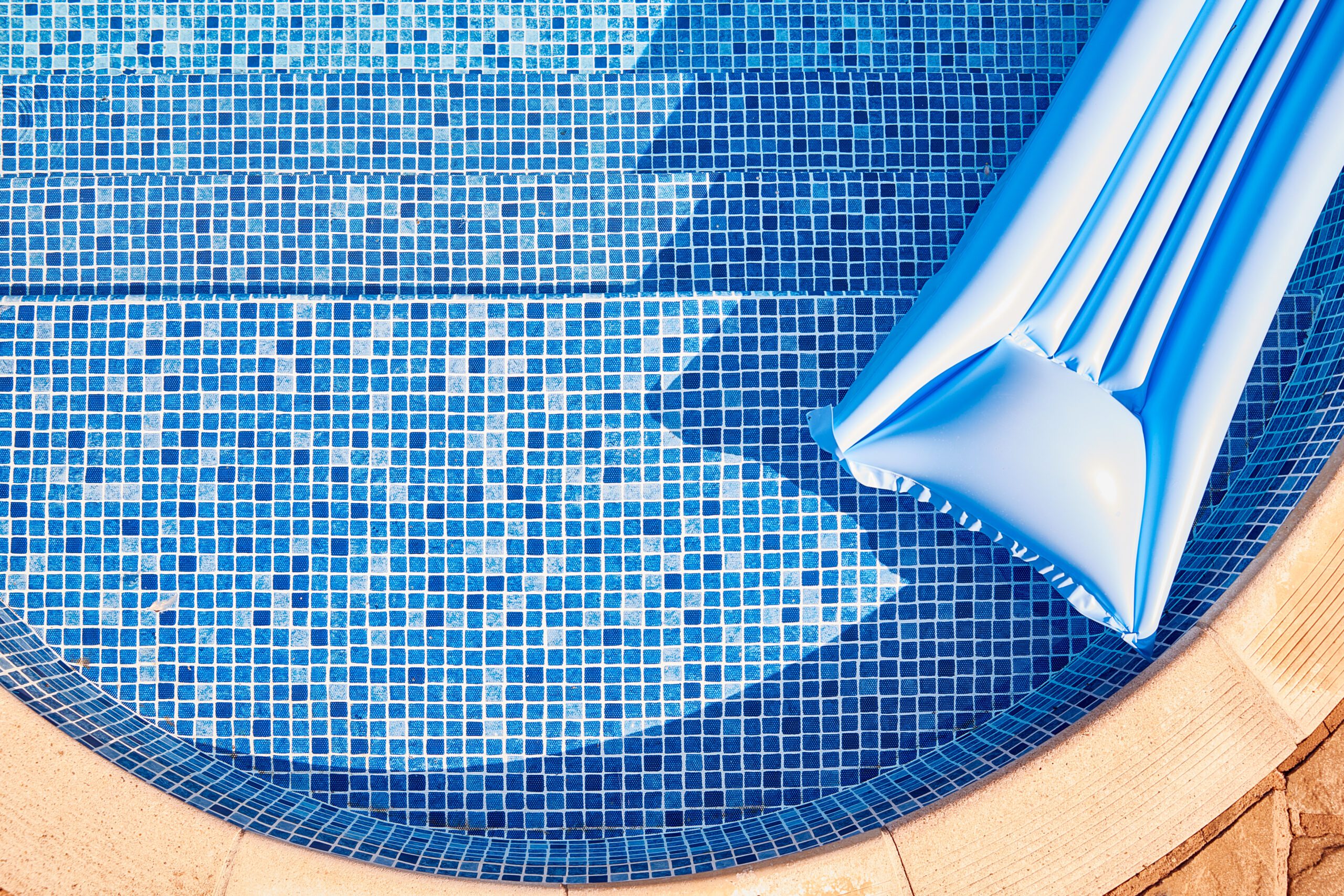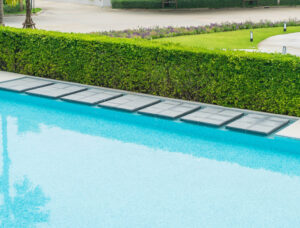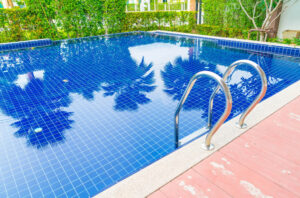Keeping your swimming pool protected throughout the year is important. One way to do that is by using a pool cover. Pool covers help keep debris out, save water by reducing evaporation, and even improve pool area safety. Choosing the right pool cover and knowing how to use it properly can make a big difference in the care and maintenance of your swimming pool.
Many types of pool covers are available, each serving a unique purpose. Understanding the differences between them and learning how to install, store, and maintain your pool cover will help you get the most out of this investment. By taking proper care of your pool cover, you can ensure your swimming pool stays clean, safe, and ready for use whenever you desire.
In this article, we’ll explore the different types of pool covers, provide tips for proper installation, and share advice on how to store your pool cover during the off-season. We’ll also highlight some common mistakes people make with pool covers and how you can avoid them. Whether you’re a new pool owner or looking to improve your pool maintenance routine, this guide will provide the essential information you need.
Choosing the Right Patio Furniture for Your Space
When selecting patio furniture, consider your space and how you plan to use it. We start by measuring the area to ensure that the furniture fits comfortably and leaves enough room for movement. For smaller spaces, compact furniture like bistro sets or foldable chairs works well. Large outdoor areas benefit from sectional sofas and expansive dining sets that provide ample seating.
Materials matter, too. We recommend materials like teak, aluminum, or all-weather wicker, which withstand the elements. Cushions and upholstery should be made from water-resistant fabrics to prevent mold and mildew. Think about the color scheme and design style that suit your home’s exterior and personal taste. Neutral colors with pops of accent hues create a welcoming look, blending well with different garden settings.
Arranging Furniture for Comfort and Functionality
Arranging your patio furniture requires thoughtful planning to ensure comfort and functionality. Start by deciding the main purpose of your outdoor space. If it’s for dining, place the table and chairs in a central spot. For relaxation, position lounge chairs around a focal point like a fire pit or water feature.
Seating should be arranged to encourage conversation, facing each other in clusters. Use side tables within arm’s reach to hold drinks and snacks. Umbrellas or pergolas provide shade, making the area comfortable during sunny days. Pathways should be clear of obstacles, allowing easy movement around the space.
In addition to the practical arrangement, consider how to create cozy zones with rugs, lanterns, and potted plants. This helps define different areas, like a reading nook or a spot for evening relaxation, making your patio more versatile and enjoyable.
Tips for Storing Your Pool Cover in the Off-Season
Storing your pool cover properly during the off-season is essential for maintaining its condition and longevity. Start by cleaning the cover thoroughly with a pool cover cleaner or a mild detergent and water. Remove any dirt, leaves, or other debris, as these can cause mildew and damage the material if left over time. Make sure the cover is completely dry before storing it to prevent mold and mildew growth.
Once clean and dry, fold the cover neatly to avoid any creases or damage. Place it in a storage bag or a container that is specifically designed for pool covers, which helps protect it from external elements such as moisture, rodents, and sharp objects. Store the cover in a cool, dry place away from direct sunlight and weather extremes to keep the material from deteriorating. Regularly inspect the stored cover for any signs of damage or wear so it’s ready to go when you need to use it again.
Common Pool Cover Mistakes and How to Avoid Them
Despite their simplicity, there are common mistakes people make with pool covers that can lead to damage or reduced effectiveness. One frequent error is not securing the cover properly. If the cover is loose, debris can get into the pool, and the cover itself can get damaged by wind. Always ensure your cover is tightly fastened with the appropriate straps or weights.
Another common mistake is neglecting to check and clean the cover regularly while it’s protecting the pool. Even when not in use, the cover collects leaves, dirt, and water, which can weigh it down and cause strain. Use a pool cover pump or a simple broom to keep the cover clear and dry.
Lastly, avoid dragging the cover over rough surfaces, which can scratch or tear the material. Be mindful during installation and storage to handle the cover gently. By taking these precautions, you can extend the life of your pool cover and keep your pool in great shape.
Conclusion
Proper care and maintenance of your pool cover are crucial steps in protecting your pool and ensuring that it remains a safe and enjoyable place to swim. From understanding the different types of covers available, learning how to install them correctly, to knowing the best practices for storage and avoiding common mistakes, each aspect plays a vital role in the longevity and effectiveness of your pool cover.
By following these guidelines, you will keep your pool clean and ready for use and save money on repairs and replacements. Regular attention to your pool cover means fewer headaches and more time enjoying your pool.
Need help selecting the right pool cover or tips on maintaining your pool? Visit Cincinnati Pool & Patio today and let our experts guide you in creating a perfect backyard oasis.








